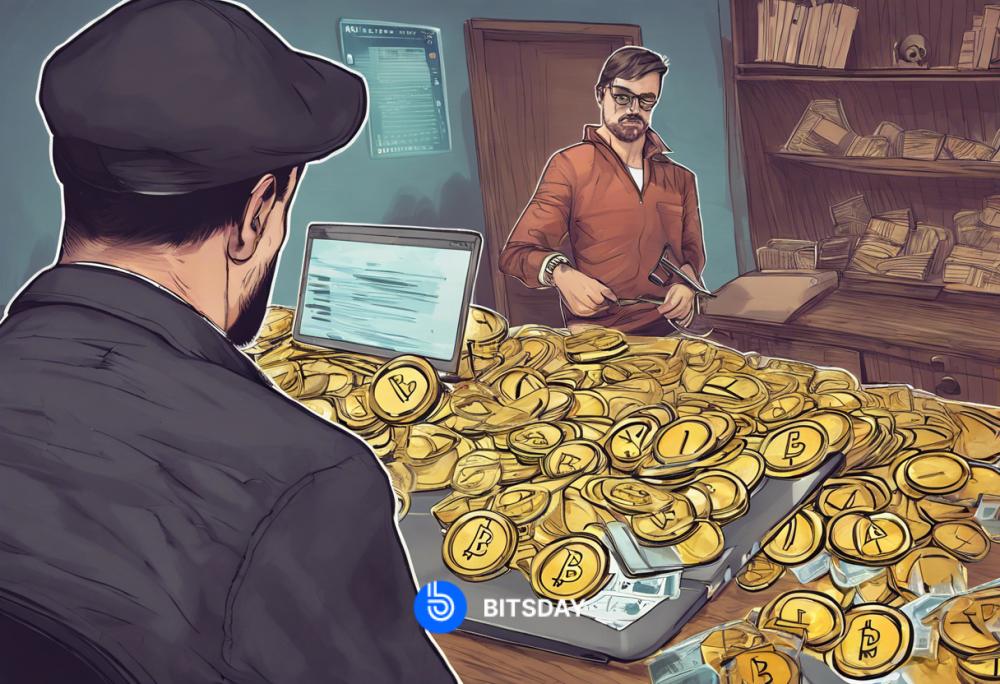Bitcoin Mining Strategies Unveiled

Crypto experts, traders, and the enigmatic Bitcoin proponents on X (formerly known as Twitter) often decipher Bitcoin miners' actions with their block rewards as an indicator of market sentiment, speculating on where Bitcoin's price might head.
The prevailing theory posits that when Bitcoin miners, represented by the BTC ticker now clocking in at $26,968, transfer their rewards to exchanges, it may foreshadow impending selling pressure on the asset's price, potentially signaling distress among these miners.
During last week's Bitmain World Digital Mining Summit (WDMS) in Hong Kong, publicly traded Bitcoin mining companies challenged elements of this approach during a panel moderated by the head of markets, Ray Salmond.
 Bitmain WDMS panel on Bitcoin mining and renewable energy
Bitmain WDMS panel on Bitcoin mining and renewable energy
According to Jeff Taylor, the Executive Vice President of Data Center Operations at Core Scientific, "Core Scientific might serve as a prime example of the 'hodl' strategy. We amassed a stash of 10,000 Bitcoins, rode the price surge to its peak, and subsequently encountered financial challenges we are currently navigating. Consequently, our current approach involves daily selling of our Bitcoin production."
It all boils down to three key elements: identifying cost-saving opportunities, enhancing operational efficiency, and exploring innovative financial strategies to bolster our company's overall profitability," Taylor elaborated.
Panelists Taylor Monnig of CleanSpark and Will Roberts of Iris Energy concurred with Taylor, noting that their respective companies also prefer to sell a significant portion of their mined BTC.
Monnig stated, "CleanSpark adopted a markedly different strategy. During the bullish market, we exercised caution and received criticism for selling Bitcoin even at its peak of $60,000. However, our strategy has paid dividends this year with our expansion to 9.5 exahashes. Now, as Bitcoin's price has receded, we are gradually increasing our holdings."
We embraced a more conservative approach during the bullish phase and have maintained this 'building during the bear' motto within our company. I believe many miners have learned valuable lessons from the previous market cycle and will adopt CleanSpark's strategy in the future.
Roberts shared, "Since the inception of our mining operations, we have consistently sold all our Bitcoin. Our perspective is that mining Bitcoin and running data centers constitute a distinct business model compared to investing in the asset itself. Our primary focus is generating value for shareholders through efficient data center operations."
We believe that selling a Bitcoin today and potentially earning it back, with interest, in the future, or even distributing dividends—whether in cash or Bitcoin—represents a more favorable approach," Roberts emphasized.
Nazar Khan, co-founder of TeraWulf, added, "The last bull market feels like ancient history. Our strategies have evolved significantly. Similar to others here, we sell every Bitcoin we produce. At TeraWulf, we view ourselves as converters—transforming kilowatt hours into hash power using Bitmain's ASICs. Our daily yardstick for success is the efficiency of this conversion process. We communicate to our investors that we are converters, and our focus is monetizing every Bitcoin we sell."
So, does this mean that Bitcoin analysts have been barking up the wrong tree?
When questioned about the precision and methodology of on-chain metrics like Charles Edward's hash ribbons indicator, Khan remarked, "Being an analyst is an inherently challenging endeavor; historical data suggests that analysts are often wrong. Moreover, historical conditions were different when we enjoyed margins exceeding 80%. Back then, there was no urgency to sell every produced Bitcoin."
"Today, given our ambitious growth plans and the tight capital markets in recent years, the only substantial income source we have is the margins generated through Bitcoin mining or securing additional capital. Thus, for publicly traded miners, their Bitcoin selling strategies should not be viewed solely as signs of capitulation or distress. It's more about how these strategies align with their current positions, future growth plans, and capital requirements," Khan elaborated.
Statements from Foundry Vice President Kevin Zhong echoed the sentiments of the publicly traded miners at WDMS.
In an ideal scenario, we'd rely on optimism that Bitcoin's value would appreciate, naturally resolving our challenges. However, such a scenario is not guaranteed. The economic incentives for Bitcoin's value to soar may not materialize until six to twelve months after a halving event. In such cases, creativity becomes essential. How can we optimize block space usage? How do we increase transaction fees? What alternative methods exist to support ourselves and other miners? Additionally, prudent management of mined Bitcoin is crucial. Do we hedge it? Engage in covered calls? What are our treasury plans? If we're bullish on Bitcoin, do we liquidate it all or retain a portion? It demands a sophisticated approach involving endless models."
 Foundry senior vice president Kevin Zhang speaks about the Bitcoin halving
Foundry senior vice president Kevin Zhang speaks about the Bitcoin halving
For the complete discussion on Bitcoin miners' shift toward renewable energy, the burgeoning collaboration between energy producers and BTC miners, and miners' perspectives on the impending halving event, please refer to the WDMS panel linked here.
Read more: BTC ETF Delays: Regulatory Outlook

Trending



Press Releases

Deep Dives







